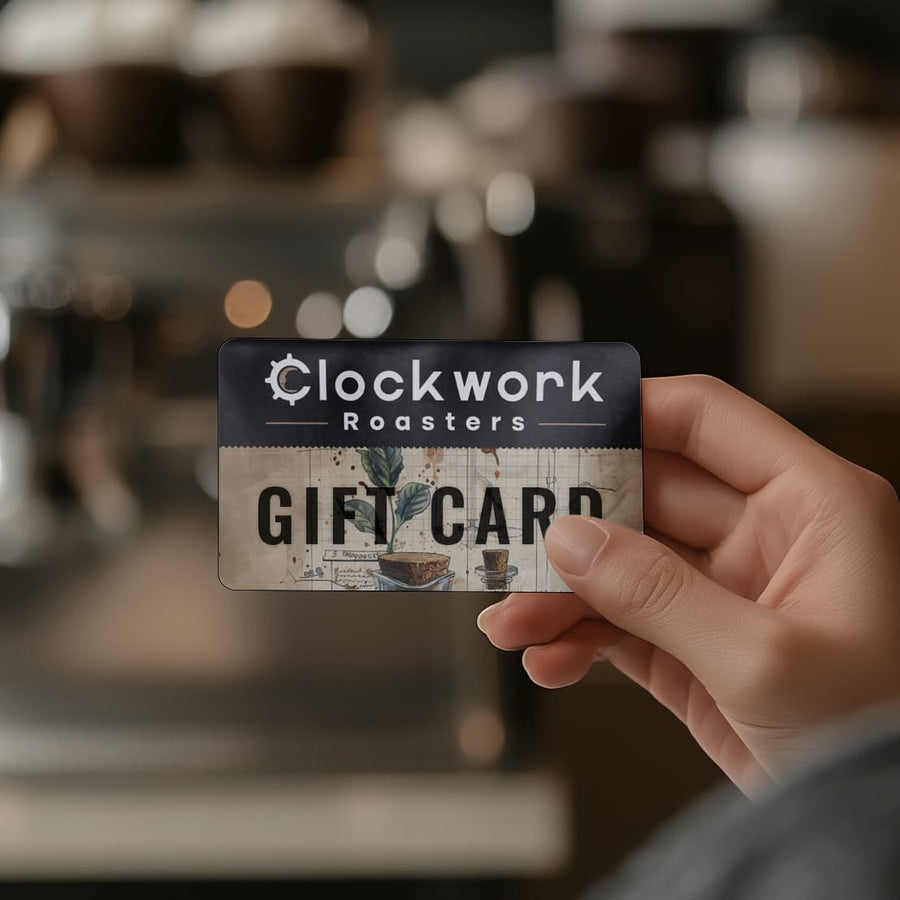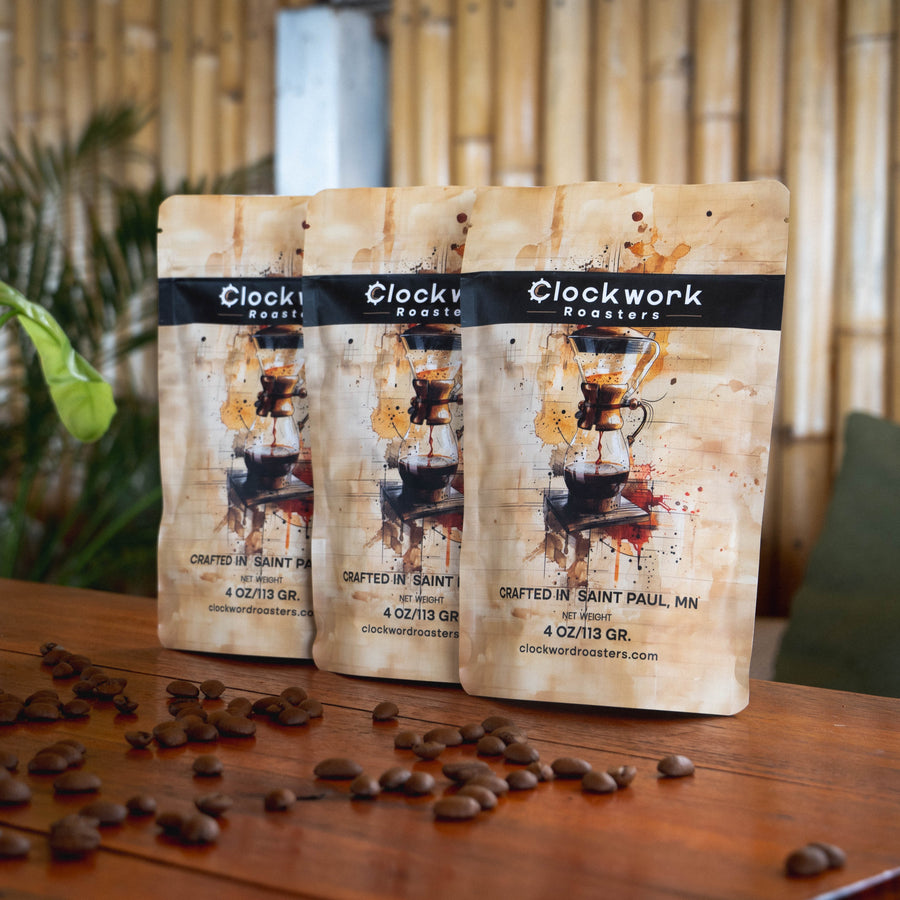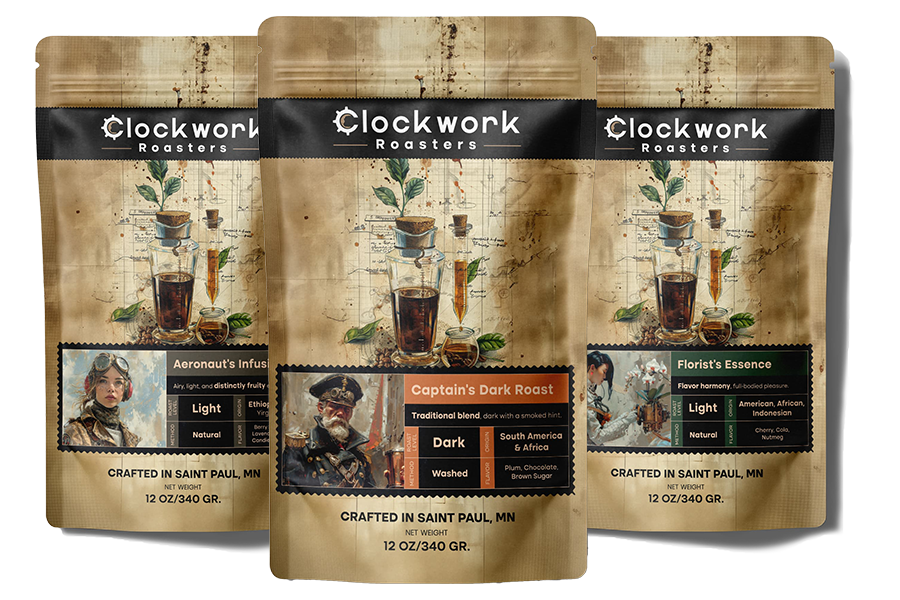How to Choose the Best Espresso Beans & Make a Great Espresso Shot

How to Choose the Best Espresso Beans & Make a Great Espresso Shot
Espresso is a beautiful balance of bean, roast, grind, dose, water, and technique. Getting each of these right makes the difference between a mediocre shot and something you savor. Below are clear, numbered guidelines for choosing beans and for pulling a high-quality espresso, plus a recommendation from Clockwork Roasters.
1. Choosing the Right Espresso Beans
When shopping for beans, think of these factors in order. Each contributes to how your espresso will taste in the cup.
| # | What to Consider | Why It Matters |
|---|---|---|
| 1. Roast Level | Dark roasts tend to deliver bold, smoky, chocolatey notes and often work well in milk-based drinks. Medium roasts can give more balance—some sweetness, some origin character. Light roasts are bright and fruity, but can be harder to extract well and may taste thin in milk. | |
| 2. Freshness / Roast Date | Freshly roasted beans (often within 7-21 days of roast) preserve more volatiles (flavor, aroma, CO₂) which contribute to crema, body and taste. As beans age, they lose flavour. | |
| 3. Origin & Processing | Where the bean is grown (altitude, climate, soil) and how it was processed (washed, natural, honey, etc.) influence flavor notes (fruit, floral, chocolate, citrus, etc.). If you like adventurous flavour, look for distinct origin/processing. If you prefer consistency, a well-constructed blend may be safer. | |
| 4. Blend vs Single Origin | Blends are often designed to perform well as espresso (balanced, forgiving, consistent). Single origin can be more interesting, unique, but may require more precise dialing (grind, temperature, shot time) to shine. | |
| 5. Flavor Profile & Preference | Before buying, think what you like: chocolate / caramel / nutty / smoky? Or do you like bright, fruity, citrusy notes? Decide if the espresso is going into mostly milk drinks or if it’s going to be drunk straight. That will influence which flavour profiles will work best. |
2. Steps to Make a High-Quality Espresso Shot
Once you have good beans, the rest of the process matters just as much. Use these organized steps as your shot checklist.
| Step | What to Do | Key Details & Tips |
|---|---|---|
| 1. Warm everything | Warm your machine, portafilter, cup, group head. A cold metal part or cup will drop temperature and hurt extraction. | |
| 2. Use fresh, clean water | Tasting bad water = bad espresso. Filtered, good mineral profile water improves flavour clarity. | |
| 3. Grind just before extraction | Grinding fresh preserves aroma and CO₂, which help crema and flavour. Grind size must be appropriate for espresso (very fine). | |
| 4. Dose & Tare | Weigh your coffee dose (e.g., 18-20 g for a double shot in many machines). Also weigh yield (the amount of espresso in cup), and time extraction. This allows you to replicate and adjust. | |
| 5. Distribute & Tamp | Make sure grounds are level and evenly distributed to avoid channeling. Tamping pressure should be firm and level. A polished, even puck gives more uniform extraction. | |
| 6. Shot Time & Ratio | Typical target is about 25-30 seconds for a double shot (this will vary). A common brew ratio is 1:2 (e.g. 18 g coffee → ~36 g liquid), though some beans/preferences call for more or less. Adjust grind size, dose, or yield to tweak for taste. | |
| 7. Monitor Taste & Adjust | Taste the shot: if it’s sour → under-extracted: grind finer, raise temperature, increase dose or time. If bitter or harsh → over-extracted: grind coarser, reduce time or yield. Only change one variable at a time. | |
| 8. Clean & Maintain | Coffee oils, old grounds, scale build-up all degrade flavour. Clean group head, basket, portafilter, purge water lines regularly. Keep machine well maintained. |
3. Common Misconceptions & Troubleshooting
-
“Espresso beans” have to be dark roast — False. Many espresso roasts are medium or even light-roasted, depending on flavor target. It’s more about roast style and extraction than simply darkness.
-
More tamping pressure = better espresso — Only up to a point. What matters more is even tamping, level puck, and consistent dose and grind. Over-tamping or uneven tamping causes issues.
-
Bitter shots always mean over-extraction — Sometimes bitterness can come from too high temperature, stale beans, or burnt roast. Always cross-check multiple variables.
4. Bean Recommendation: Clockwork Roasters
If you want a concrete bean to try, here’s one from Clockwork Roasters that aligns with many of the above criteria.
Barista’s Pride by Clockwork Roasters
-
Roast Level: Dark roast. (Clockwork Roasters)
-
Origin: Colombian and Ethiopian beans. (Clockwork Roasters)
-
Flavor Notes: Sweet caramel, dark chocolate, vanilla. (Clockwork Roasters)
-
Why it’s a good choice:
-
It’s designed specifically as an espresso blend — so it's been balanced for crema, body and flavour in an espresso extraction. (Clockwork Roasters)
-
Because of its dark roast, it will perform well in milk-based drinks (lattes, cappuccinos). The chocolate / caramel / vanilla notes help cut through milk without getting lost.
-
Origin diversity (Colombia + Ethiopia) gives some complexity behind the richer roast character.
-
You can check it out here: Barista’s Pride – Clockwork Roasters (Clockwork Roasters)
5. Putting It All Together — Example Espresso Recipe
Here’s a sample workflow using Barista’s Pride, to help you dial in a shot. You can adjust based on your machine and taste.
-
Warm up your machine and portafilter (flush water, preheat cup).
-
Use fresh, clean filtered water.
-
Grind Barista’s Pride beans right before brewing; aim for espresso-fine grind.
-
Dose: ~18 grams ground coffee (double basket)
-
Distribute evenly and tamp level (apply firm even pressure)
-
Brew with target yield: ~36 grams liquid espresso (ratio ~1:2)
-
Shot time target: ~25-30 seconds
-
Taste: if too sharp/acidy → grind finer or slightly longer extraction. If too bitter → coarser grind or reduce time.
-
If using milk, steam carefully (textured, microfoam) and pair with flavourful bean to balance.
6. Conclusion
Choosing great espresso beans isn’t just about picking the fanciest origin or the darkest roast. It’s about matching roast, origin, processing, and flavour profile to what you like, and then paying attention to every part of the brewing process: freshness, grind, dose, temperature, technique.
If you want to try something reliable, the Barista’s Pride from Clockwork Roasters is an excellent pick. And once you master one bean, the joy comes in experimenting — different origins, roast levels, blends vs single origin — until you find your espresso style.








Leave a comment